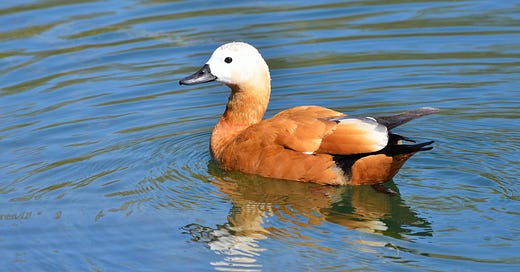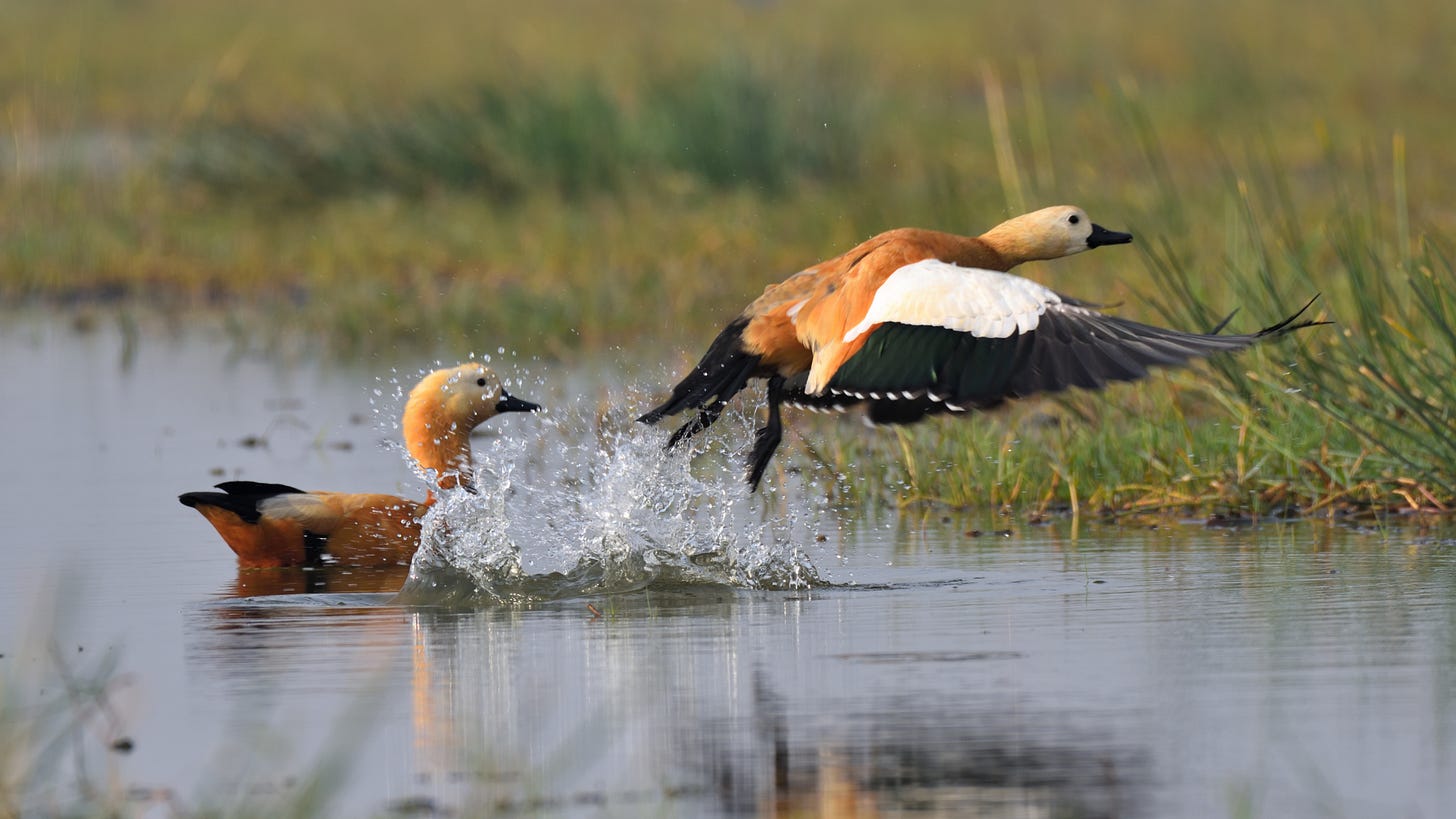There is something quietly thrilling about encountering a bird that seems at once familiar and utterly exotic. Imagine a duck whose very name evokes distant, sun‑baked lakes and stirring migrations, yet here it is, casually paddling in a British gravel pit. The Ruddy Shelduck combines elegance and audacity, its rust‑coloured plumage glowing like a fragment of sunset. In this article, we embark on a voyage through its key facts, its curious presence in the UK, the subtle artistry of its feathers, and its globe‑trotting temperament.
Quick Facts
Scientific name: Tadorna ferruginea
Length: 58 to 70 cm
Wingspan: 110 to 135 cm
Weight: 1.2 to 1.9 kg
Lifespan: Up to 20 years in the wild
Breeding range: Central Asia, southern Russia, north‑east Africa
IUCN status: Least Concern
Eastern Origins
Although true wild populations of Ruddy Shelduck cluster in the steppes of central Asia and along the Caspian shores, their reputation in western Europe rests largely on feral descendants of ornamental collections. In the UK, sightings are most frequent around reservoir car parks of southern England.
These charismatic birds have, over the past century, established tenuous hold‑outs in the Thames Valley and parts of Wiltshire. Breeding attempts have met with mixed success: a handful of broods have fledged, but most pairs remain summer visitors of uncertain origin.
Winter counts ebb and flow with the weather. Mild spells coax more wanderers into our waters, but peaks rarely exceed a few dozen. Even so, each flash of orange on a grey December day reminds us that Britain’s waterways are open stages for avian interlopers.
A Dazzling Duck
At first glance, male and female Ruddy Shelduck appear much alike, yet a closer study rewards the observant. The head and neck glow creamy orange, fading to buff across the underparts. The back, wings and flanks flaunt the deep ruddy tones behind the name.
In flight, a bold white wing patch, like a jaunty cuff, becomes impossible to ignore. Black bills, legs and feet provide dramatic punctuation to the warm palette. A dusky mask around the eye lends each bird a rakish expression, as though it relishes the admiration of every telescope trained upon it.
Juveniles present a shy contrast: duller cinnamon‑brown and lacking that emphatic white badge until their first moult.
A Globetrotter
Few ducks rival the Ruddy Shelduck for wanderlust. From its steppe breeding grounds, flocks disperse southwards each winter. Some brave the Himalayas to over‑winter on the Indian plains, others drift along the Nile or winter in Eritrea.
In Europe, vagrants have turned up as far west as Ireland and the Iberian Peninsula, often driven by easterly gales or continental cold snaps. Local feral populations in western Europe display less urgency, yet still roam hundreds of kilometres between seasonal haunts.
Here in Britain, the most obvious movements occur in spring and autumn, when escapees drift from private lakes to public waters. One might imagine these birds as grand tourists, trunks in tow, inspecting every former gravel pit from Norfolk to Cornwall.
The Ruddy Shelduck: A Summary
The Ruddy Shelduck embodies a fusion of southern warmth and indomitable curiosity. It may lack the mystique of more remote species, yet its vibrant hues and fearless travels make it irresistible.
Next time you glimpse a ruddy flash upon quiet waters, remember you are witnessing centuries of migration, accidental escapes and the boundless invitation of the natural world. For the devoted bird‑watcher, this duck promises the thrill of discovery and the delightful defiance of any map’s neat boundaries.





